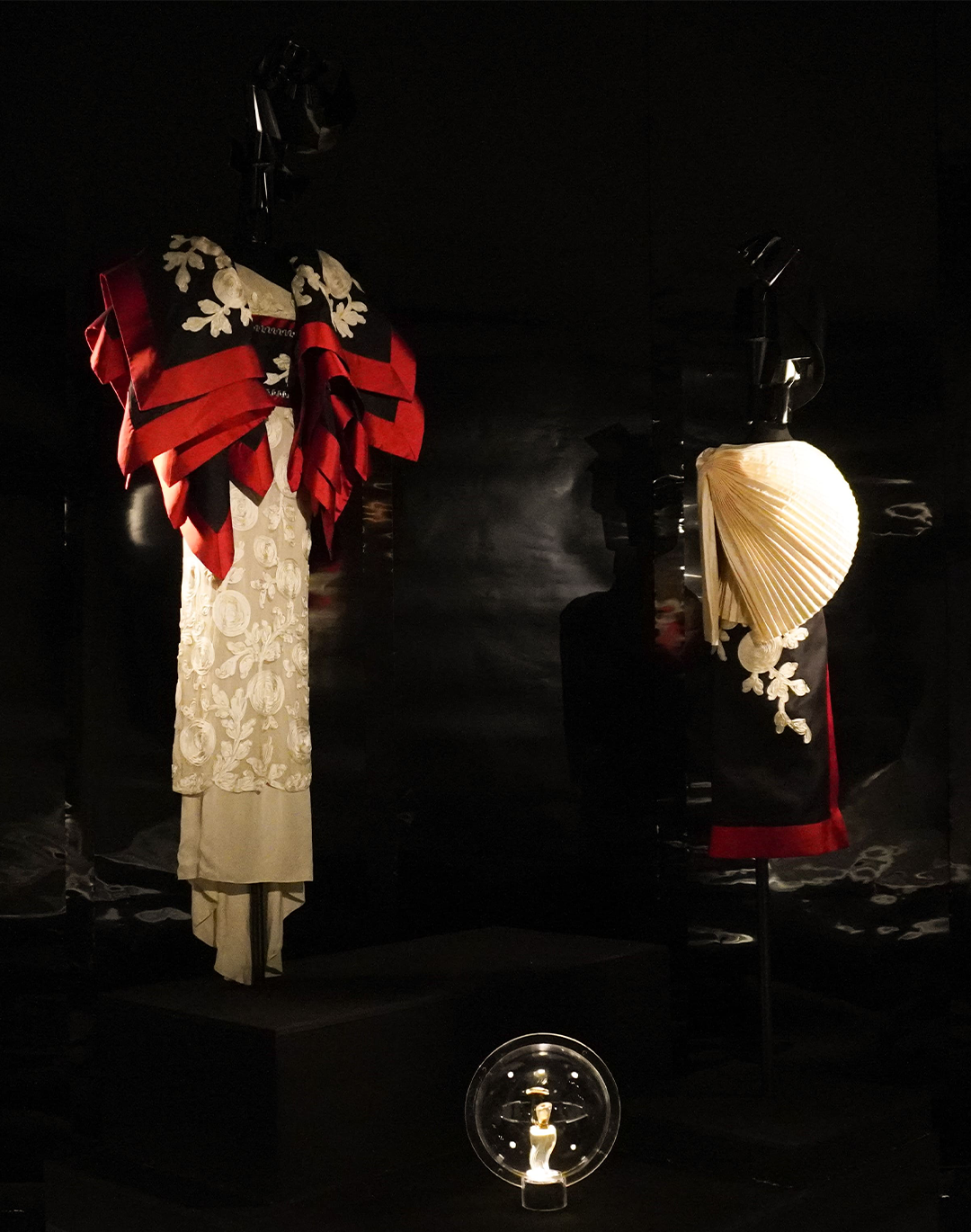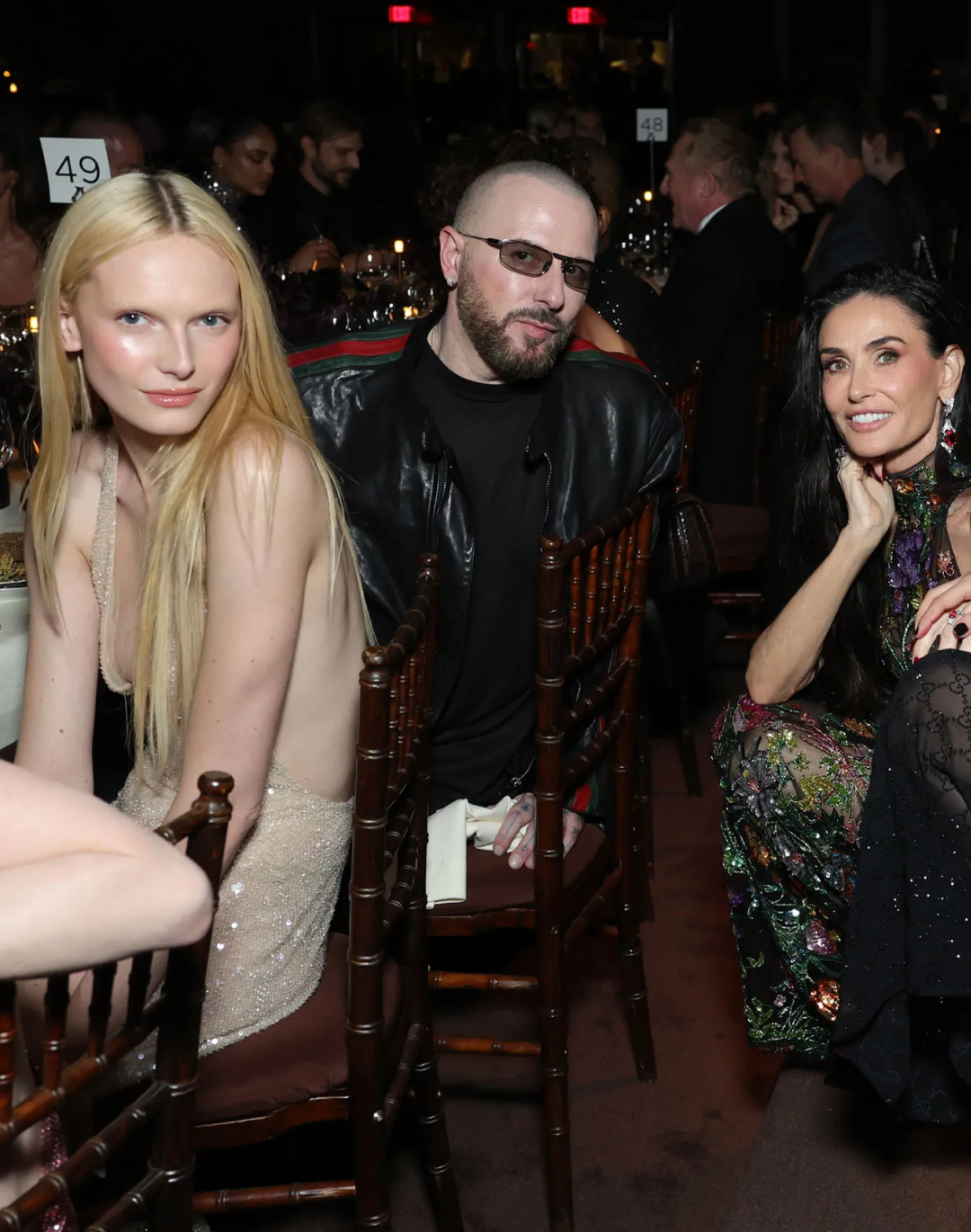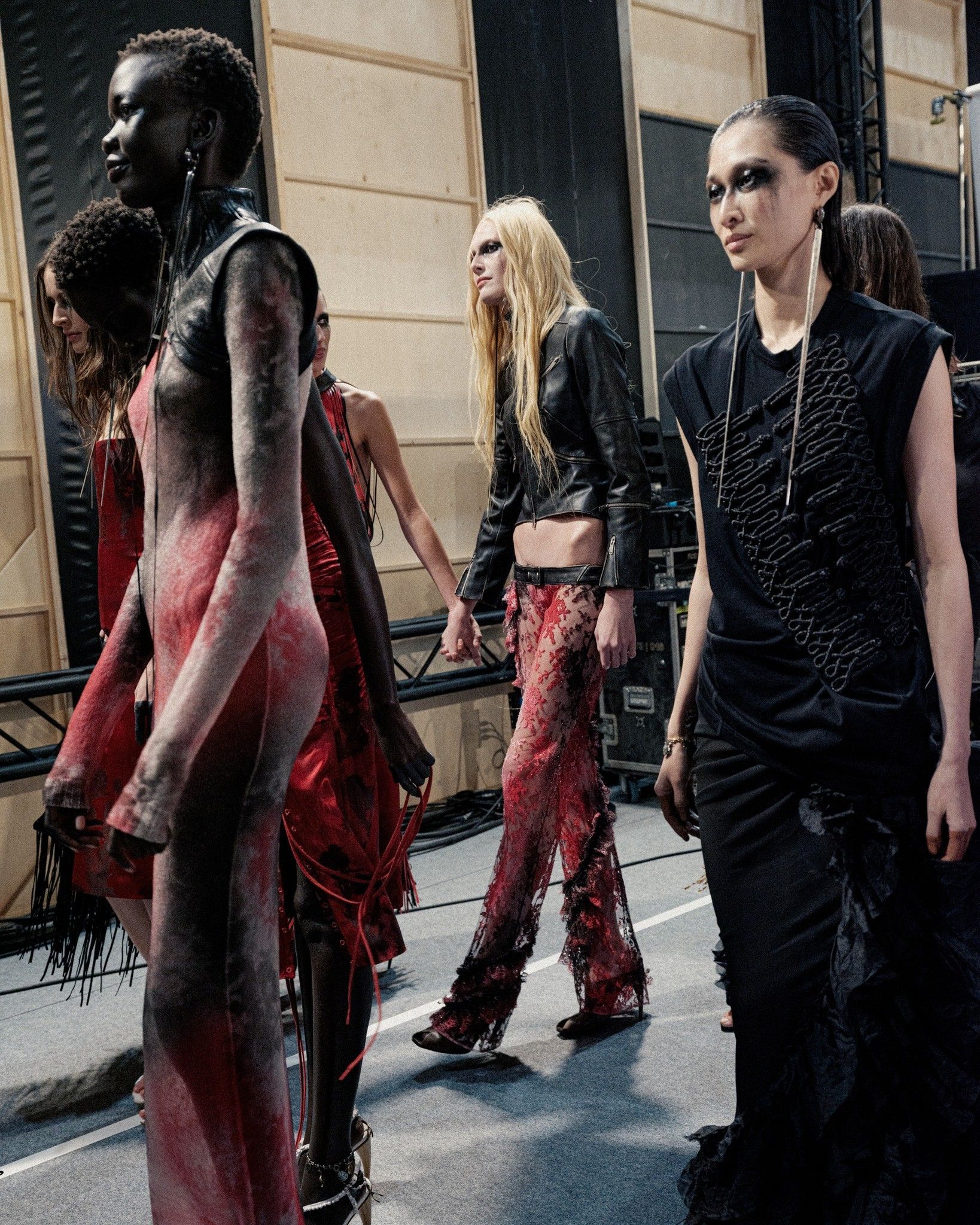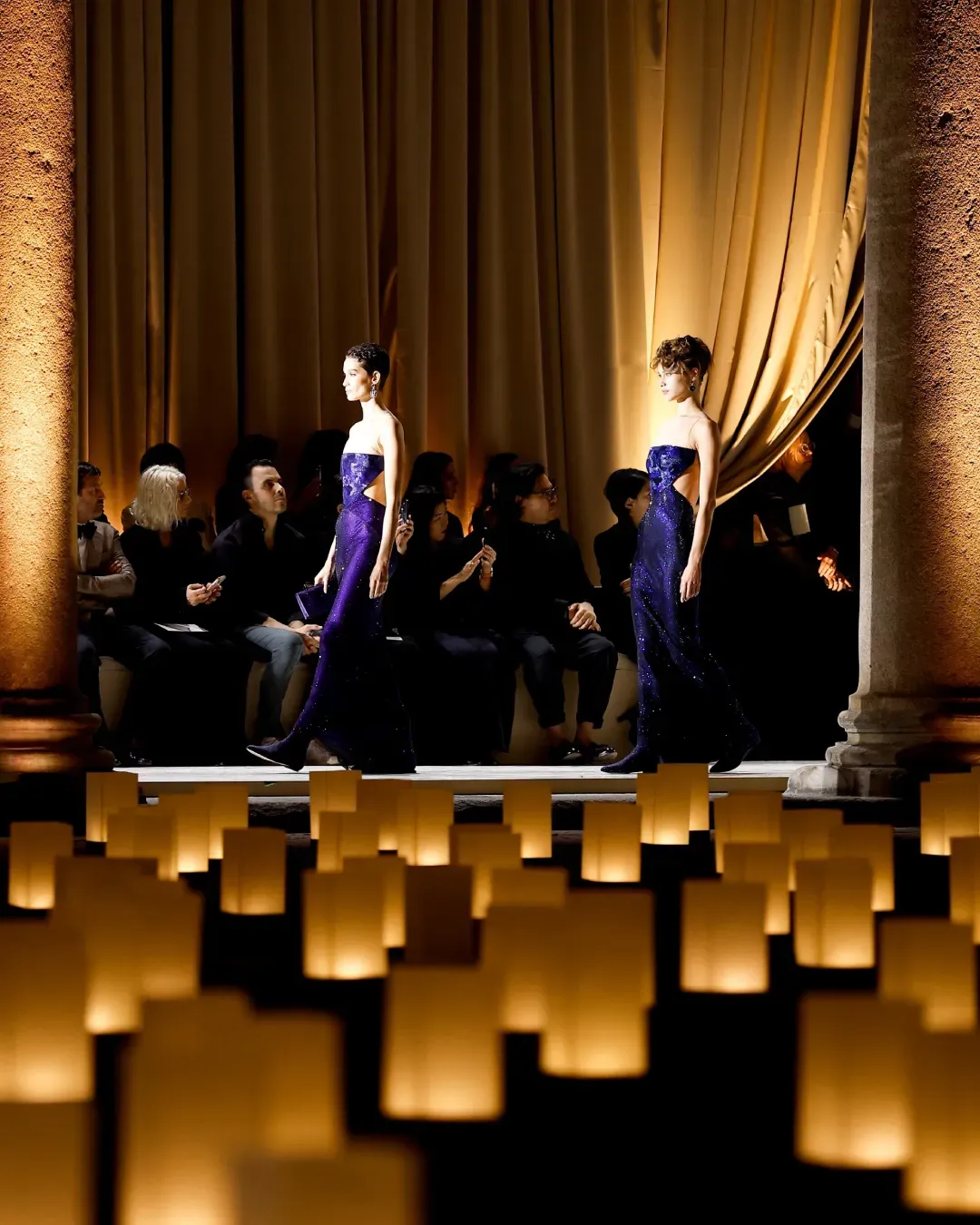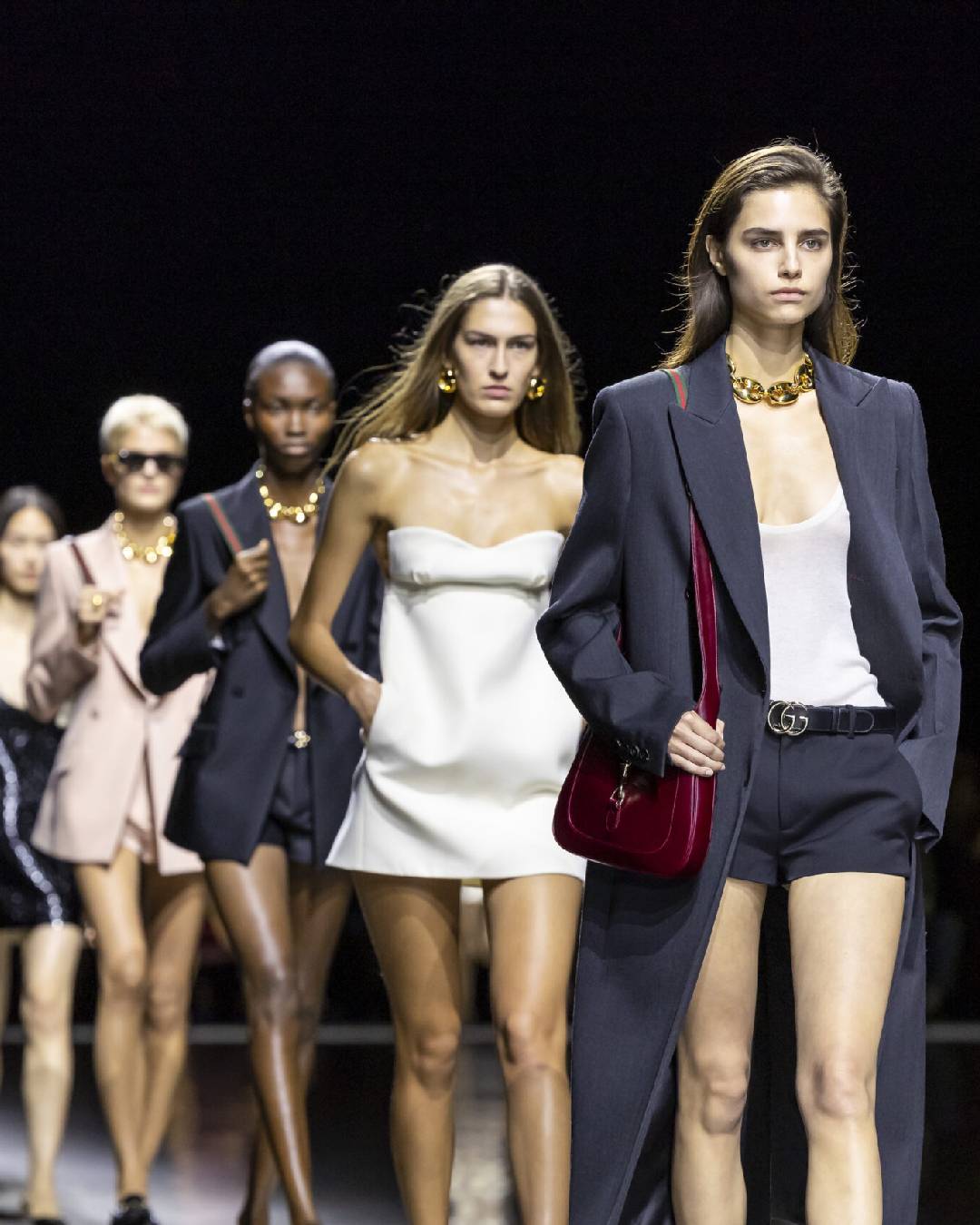
It's ancora Gucci The opposing reactions to Saturday De Sarno's debut, explained
Perhaps no collection has divided the public as much as Sabato De Sarno's Gucci debut last Friday. Originally conceived to be staged in the streets of Brera, the show was moved due to rain inside the Gucci Hub. There De Sarno showed a collection that to all intents and purposes acted as a re-centring of the brand's overall aesthetic starting with the definition of an essential wardrobe, laying the foundations for work that will later expand following the brand's new creative direction. Now, when expectations for a show are so high (and for a brand as legendary as Gucci, no less), it is difficult for the final result to live up to them - even without falling short.
What do buyers think of the new Gucci collection?
Of all that was said about the collection, with the perhaps hasty judgements of those who had already become accustomed to the pyrotechnics of the brand's past era, one phrase kept recurring: 'Of course, it will certainly sell'. In the midst of so many lucubrations, which often stop at the level of the press, the certainty that the collection would appeal to the brand's customers was shared by all. And indeed, the positive signs were felt immediately: the brand's shares rose by 4% in just one day, while a very recent article in WWD spoke of buyer satisfaction. In particular, Linda Fargo of Bergdorf Goodman, calling the pieces in the collection "the fundamental units" of the brand's new identity, said that "fashion's advertising gimmicks and provocation have gone on hiatus". A comment that echoes that situation common to all commercial creative endeavours (even in film or music for example) where public and sales success proceeds in another direction than the satisfaction of critics who often arrive at their judgements through a series of prejudices.
Does the new Gucci collection by Sabato De Sarno look back to the brand's past?
Gucci Ancora
— saikyueph (@kyuzikayzares) September 23, 2023
Enjoying a gucci gelato in Milan#LizaSoberano #LizainMilan pic.twitter.com/UjcPk9Y8LH
As we were saying, after seven years of total creative exuberance (pre-weed-stained jeans, laddered tights, jackets with 'Hollywood Babylon' sequins on the shoulders, neon green logoed joggers) that had already wearied the critics, it was clear that a signal had to be given, if not of a complete turnaround, at least of a return to reality: Gucci is a brand that is now centuries old, that for long decades has spoken a language that is yes that of unrepentant opulence, but also that of a jet-setter culture that feeds on distinctive yet timeless styles - it is an exclusivity that is seen but not noticed, a pop culture signifier that retains its appeal precisely because it is a signifier, an archetype of a certain vision of luxury. When the brand entered its deep crisis in the late 1980s and early 1990s, before the arrival of Dawn Mello and later Tom Ford, it was precisely because the original family had granted licences to the point of diluting the cultural weight of that signifier, scattering logos and monograms on the most banal products. With Mello first and Ford later, the return to form was mind-blowing and, perhaps many will not remember, but Ford's very first collection, SS95, all floral prints, cardigans and fluffy skirts, was not at all well received by the critics and Ford even contemplated leaving before returning with the sexy new silhouette a season later to conquer the world. History continues to repeat itself, in short, proving that defining the contours of the entity that is Gucci is no easy task - but at the time, a simple catwalk show was enough, whereas now, the brand wanted to reaffirm its identity through a cross-sector strategy. But how did they do it?
How has Gucci's communication changed since Alessandro Michele's departure?
Paul Mescal singing “Dancing On My Own” to Daisy Edgar-Jones at the Gucci after-party. pic.twitter.com/nHmsedIToR
— best of paul mescal (@bestofmescal) September 23, 2023
Beyond the show and the re-see of the collection, the fundamental spirit of the strategy implemented by Gucci was that of a return to reality, concreteness and authenticity - all things that reveal their value over time and whose impression is less immediate and stunning but also less superficial. But the subtlety is to be admired: literally every party-goer at fashion week was talking, in the aftermath of Gucci's after-party, about how the brand had been the only one not to lock its celebrity guests in a privè aquarium. A move that was perhaps imperceptible but fundamental, since it signals to insiders how the brand's exclusivity is now communicable, visible but not noticeable, as we used to say. The video of Paul Mescal, Jessica Chastain and Ayo Edibiri dancing at the party with the rest of the audience did more to publicise the brand and its positive attitude than any press statement: stars had literally descended from the sky. Of course, it didn't stop there.
Is Rosso Ancora a successful strategy?
From the trams to the newsstands covered in the brand's Rosso Ancora (a colour, by the way, taken from the upholstery of the Savoy Hotel where Guccio Gucci had his own enlightenment on the founding of the brand), passing through the ice-cream parlours, the pop-up gallery in Brera and even the bottles of Franciacorta with logos at the after-party, everything falls within a participatory and experiential dimension that, without using too many big words, continues to refer to a rediscovered authenticity of the brand that has descended from its philosophical empyrean to cling to the side of real people. Not that it wasn't before, but there is a new creative director now, a new era of the brand has begun and it needs to be signalled in a real way. The fact that the content of the message is this concreteness certainly helps to deliver the message. A need for concreteness that is even expressed in the metaverse, the realm of the virtual par excellence: the brand has put accessibility first by making the show available on three different platforms simultaneously. As for the fruits of this strategy, there is no doubt that it will take time, but they will not be long in coming. After all, Rome was not built in a day, but the message is unequivocal: Gucci is still Gucci.










































